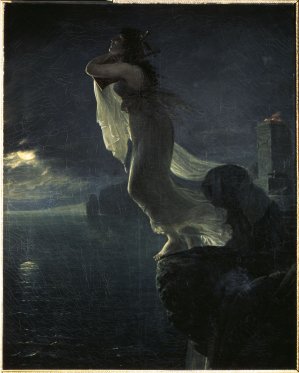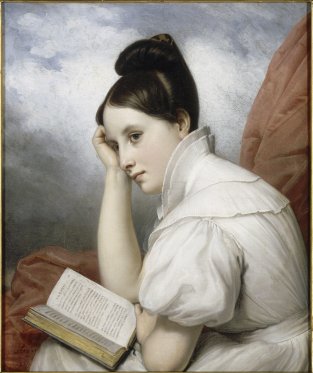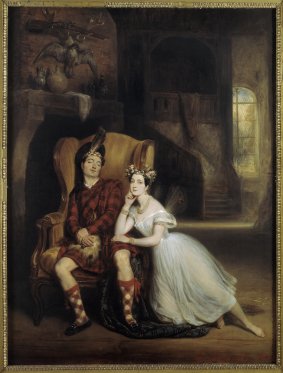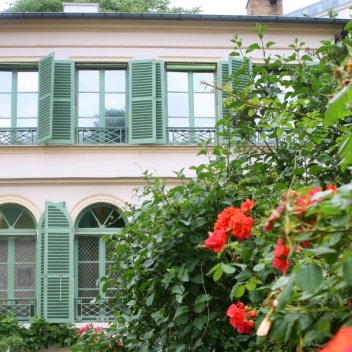
ROMANTIC HEROINES
Through displaying a selection of some one hundred works - paintings, sculptures, manuscripts, and objets d’art – the exhibition invites the public to discover heroines that romanticism reinterpreted or invented: Heroines of the past, Heroines in fiction, and Heroines on stage. This progression in three phases lets us weave links between the Fine Arts, literature, and the dramatic arts which in the 19th century played a major role in diffusing a feminine heroism with tragic undertones.
Informations
Museum
Infos Pratiques
Hotel Scheffer-Renan
16, rue Chaptal
75009 Paris
Public
- Enfant / Adolescent
- Famille
- Adulte

Eugène Delacroix (1798-1863), Roméo et Juliette au tombeau des Capulets, vers 1850, huile sur papier marouflé sur toile 35,2 x 26,5 cm, Paris, Musée National Eugène-Delacroix photo © RMN-Grand Palais
Sappho, Joan of Arc, Mary Queen of Scots, Héloïse, Juliette, Ophelia, or Atala: these women, whose dramatic histories were known, fixed a certain vision of the feminine in the collective imagination of the period. In the Fine Arts, as in literature or music, the romantic heroine endured strong passions, experienced despair and melancholy, and loved and died from loving. With all their taste for drama the romantic artists used these exceptional destinies as subjects for their compositions. The selected works of Eugène Delacroix, Anne-Louis Girodet, Théodore Chassériau, Antoine-Jean Gros, Léon Cogniet, or Léopold Burthe, most often depict these women as diaphanous and fragile, undressed, and resigned in the face of an ineluctable destiny. While most of the period’s creations are by male artists the exhibition is also interested in the 19th century women who presented heroines in their works.
Thus the exhibition honours the artists Marie d’Orléans, Félicie de Fauveau, and Frédérique O’Connell, the writers Madame de Staël and George Sand, and the actresses Harriet Smithson, Rachel, and Mademoiselle Mars, who interpreted the period’s great feminine roles on stage.
By taking on this still little explored subject the exhibition queries the way of considering women that the disseminated in a society that gave them such little scope.

Alexandre-Evariste Fragonard (1780-1850), Jeanne d'Arc sur le bûcher, 1822 Rouen MBA © Agence Albatros Réunion des Musées Métro
This selection of works is enhanced by didactic material for family and school visitors, audio contents bringing texts from the period to life or an audiovisual projection that asks who these heroines’ successors are today. A rich cultural programme supports this material: a podcast on the function of these representations produced in partnership with Julie Beauzac – a creator of podcasts on the history of art - a cycle of concerts of female romantic composers proposed by the Conservatory within the Paris region, or a concert by Chloé Mons and Hélène Singer entitled “Feminine Desires and Mythologies”.
In the form of a collective work with thematic headings the exhibition catalogue brings history and history of art together to cast a multi-disciplinary light on how romantic heroines are depicted.
Curators :
Gaëlle Rio, director, Musée de la Vie romantique
Elodie Kuhn, vice-director

Antoine-Jean Gros (1771-1835), Sapho à Leucate

Charles de Steuben (1788-1856), La Liseuse

Louis-Pierre Henriquel Dupont (1797-1892)

Eléonore Godefroid (1778 - 1849), Mademoiselle Mars

Lepaulle François Gabriel Guillaume (1804-1886), Marie Taglioni et son frère

Achille Devéria (1800-1857) Fanny Elssler dansant
